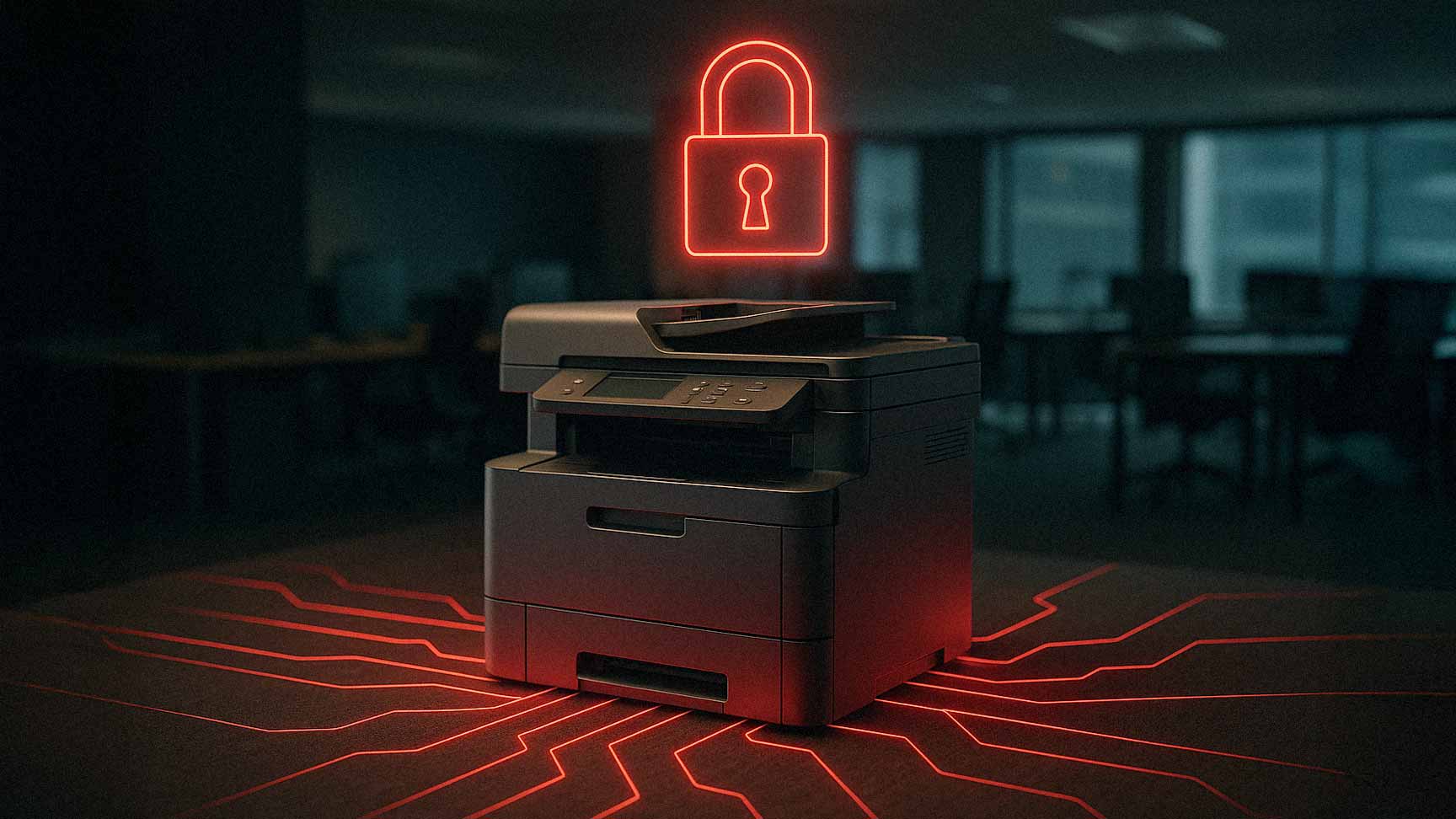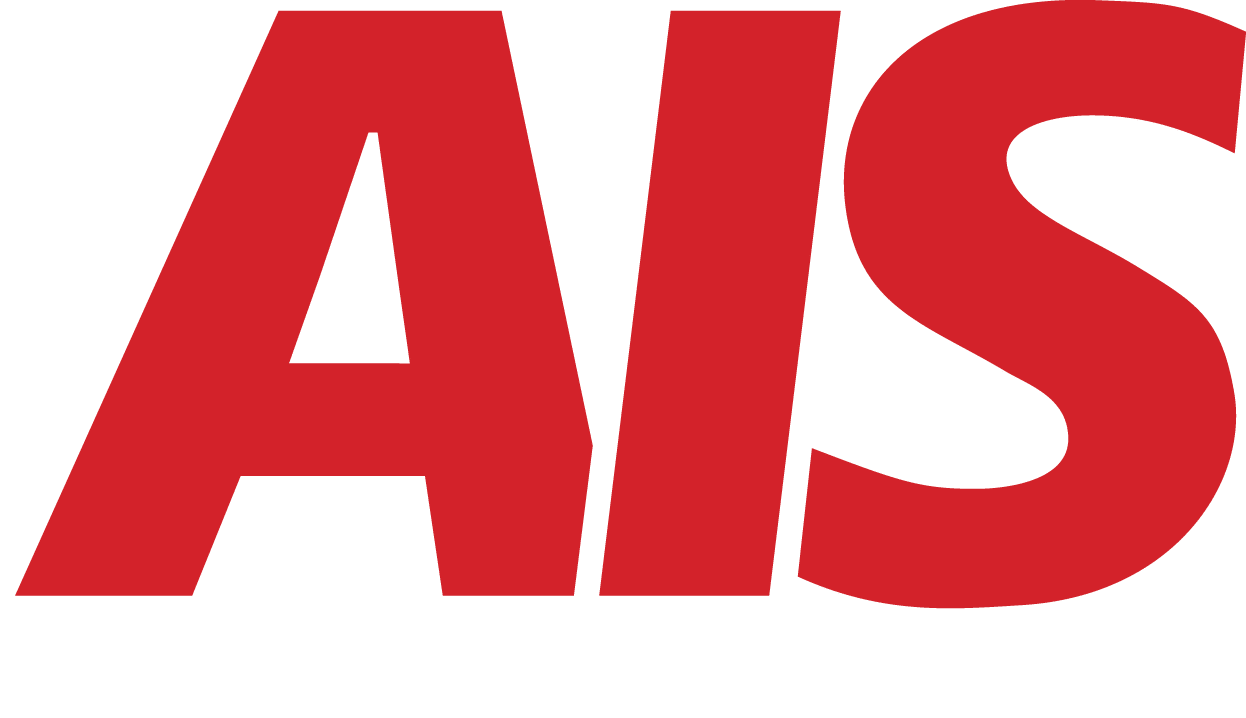Are Your Office Printers a Security Risk? (Spoiler: Probably)
July 22nd, 2025 | 6 min. read

Let’s be honest: When’s the last time you thought about your office printer as a cybersecurity threat?
Exactly.
Printers often sit quietly in the corner, humming away. They scan, copy, fax, and print your most sensitive documents.
Yet for many businesses, that same printer could be the weakest link in your entire IT security plan.
Here’s the bad news. If your office printer is connected to the network (and it almost certainly is), it can be vulnerable to hacking. And unfortunately, it happens more often than most people realize.
In this article, we’ll explain why office printers are often overlooked, what threats they pose, and what you can do to protect your business before it becomes a problem.
Why Are Office Printers Often Overlooked in Cybersecurity Plans?
"It’s just a printer" — the dangerous assumption.
Most people don’t realize that a modern multifunction printer (MFP) is basically a computer. It has its own operating system, storage, and internet access.
Although it may not run Microsoft Word, it can still process and store data. That data can be intercepted, stolen, or tampered with if the device is not adequately secured.
Treating a printer like a harmless appliance is a risky approach. It’s like leaving your front door open because you think no one would bother walking in.
How Most Printers Are Connected To Your Network
If your employees print from laptops, desktops, or mobile devices, your printer is connected to the same internal network. Some may even connect to the cloud. That makes them a potential entry point for cyberattacks.
Hackers can use this access to:
- Intercept print jobs and passwords
- Retrieve files stored on the printer’s internal memory.
- Move deeper into your network once inside.
Real-world Hacks Through Printer Vulnerabilities
Cybercriminals actively look for vulnerable devices, including printers. HP and Canon regularly issue security patches to fix printer vulnerabilities.
The National Institute of Standards and Technology (NIST) maintains a growing list of documented printer-related vulnerabilities (CVE entries).
In one public case, a group of ethical hackers breached a company’s network through a poorly secured printer. Within minutes, they had access to sensitive files across the entire system.
What Are The Top Security Risks Hiding Inside Your Printer?
Unsecured Network Access
Printers connected to your network can be used as a launchpad for attacks. Without proper segmentation, firewall rules, and monitoring, an unauthorized individual could gain access to company files or systems through the printer.
Stored Data on Printer Hard Drives
Many office printers store past print jobs, scans, and faxes on internal memory. If not encrypted or regularly cleared, this data can be retrieved by someone with physical or remote access.
That could include employee records, customer contracts, or financial documents.
Default Passwords and Outdated Firmware
One of the most common oversights is failing to change the default admin password on a printer. Many businesses also neglect to update printer firmware.
Hackers actively scan for devices using factory settings or old software because they’re easy targets.
Unauthorized Access to Printed Documents
Physical security matters too. Ever printed a document and forgot to pick it up? In a busy office, sensitive paperwork can sit unattended on the output tray. Anyone walking by could grab it, intentionally or not.
Signs Your Office Printer Might Already Be a Security Weak Spot
Are you unsure whether your office printer is putting your business at risk? Here are a few warning signs:
Frequent Printer Downtime or Odd Behavior
Unexpected restarts, freezing, or strange behavior can signal deeper issues. It might be malware, outdated firmware, or even unauthorized activity.
Lack of Access Controls or Audit Logs
Can anyone in the office print anything at any time without a login? If so, you have no way to track who is using the device or what they are printing. That creates gaps in accountability.
No Recent Firmware Updates or IT Involvement
If your IT team hasn’t touched the printer in months (or ever), there’s a good chance it’s not up to date. Firmware updates are just as crucial for printers as they are for servers or workstations.
How to Fix Printer Security Gaps in Your Office
The good news is that fixing these issues doesn’t have to be difficult. With a few adjustments, you can transform your printers from a liability into a secure component of your IT environment.
1. Partner With Your Managed IT Team or MSP
Whether you manage IT in-house or work with a Managed Service Provider (MSP), your printers need to be part of your cybersecurity strategy. That includes regular updates, monitoring, and access control.
If you're not sure where to start, a Managed Print Services (MPS) provider can help. Read more about what MPS includes and how it works.
2. Use Secure Print Release and User Authentication
Secure print release means documents are held in a queue until the user is physically present to release the job, usually with a PIN code or ID badge. This reduces the risk of sensitive documents being left unattended on the tray.
Requiring login credentials also lets you track usage and set rules based on job type or user role.
3. Keep Firmware Updated and Restrict Admin Access
Treat your printers like any other endpoint on your network. This involves keeping firmware up to date, changing default credentials, and restricting administrative access to authorized personnel.
If you don’t know how to check for updates, your IT team or printer vendor should be able to help.
4. Implement Audit Logging and Monitoring
Modern printers support logging features that track print activity and administrative changes. Some advanced setups even offer alerts for suspicious behavior, such as failed login attempts or configuration changes.
These tools help you catch issues early and maintain compliance with privacy or data protection regulations.
Should You Get a Print Security Assessment? (Yes.)
A print security assessment is not just for enterprise IT teams. Small and midsize businesses are often more vulnerable because they assume no one is targeting them.
That assumption is wrong. Printers are low-hanging fruit for attackers because they are often ignored and underprotected.
What’s Included In A Print Security Audit?
A proper audit will review:
- Device configurations and password policies
- Network connections and segmentation
- Access controls and print tracking
- Firmware version and update history
- Physical security and output risks
Benefits for Small and Midsize Businesses
Here’s what a printer security assessment can do for your business:
- Help you comply with regulations like HIPAA or GDPR
- Prevent accidental data exposure or leaks.
- Strengthen your overall cybersecurity strategy.
- Free up your internal IT team to focus on other priorities
How Does AIS Help With Printer Security?
At AIS, we take printer security seriously. Whether you're running a single office or multiple locations, we provide assessments and solutions that reduce risk and increase visibility.
If you're wondering where to start, check out our guide on why you should be concerned about print security.
We help you manage your print environment the same way you'd manage your network—with control, transparency, and expert support.
Final Thoughts: It’s Time to Stop Ignoring Your Office Printer
If you’ve been treating your printers like harmless office furniture, it’s time to think again.
These devices store and transmit sensitive data. They connect to your network. They have their software, passwords, and vulnerabilities. In short, they deserve the same security attention as your computers and servers.
Here’s what you can do today:
- Talk to your IT team about printer risks
- Review who has access to each device
- Schedule a professional print assessment.
- Make sure firmware and passwords are up to date.
It’s never too late to get this right. However, waiting too long could mean a breach you didn’t anticipate.
A true southerner from Atlanta, Georgia, Marissa has always had a strong passion for writing and storytelling. She moved out west in 2018 where she became an expert on all things business technology-related as the Content Producer at AIS. Coupled with her knowledge of SEO best practices, she's been integral in catapulting AIS to the digital forefront of the industry. In her free time, she enjoys sipping wine and hanging out with her rescue-dog, WIllow. Basically, she loves wine and dogs, but not whiny dogs.
Topics:



